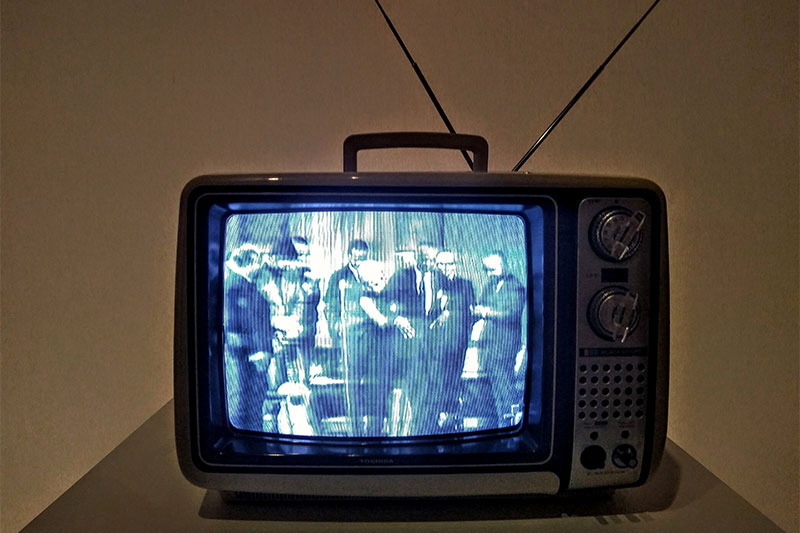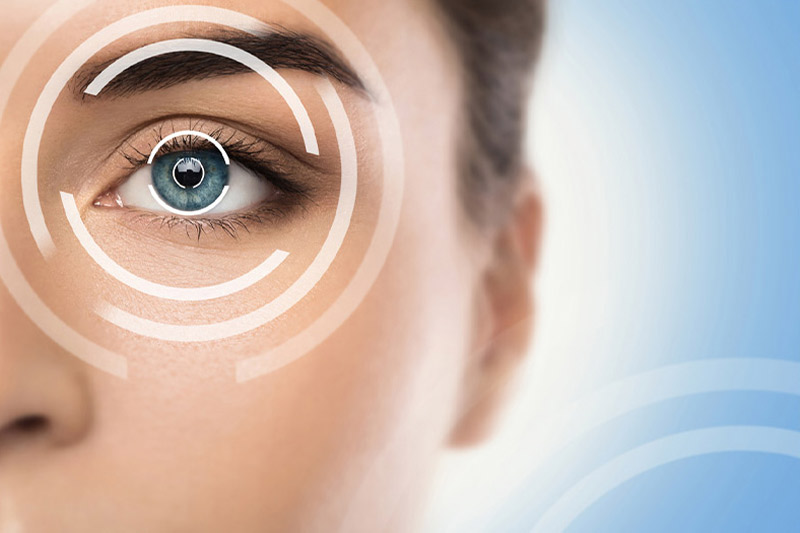What does that sign say? Where is that on the menu board? What street was that? What are those movie subtitles saying?
For anyone living with nearsightedness, known clinically as myopia, these questions are just part of everyday life.
Myopia is a vision condition that is estimated to affect more than 40% of Americans. By definition, myopia is a common but treatable refractive error that causes a person to only be able to see close objects clearly while objects far away become blurry.
If you experience any of the following scenarios with regularity but don’t wear glasses or contacts, you could be one of the 200,000 people who are diagnosed with myopia every year.
You often miss turns because you can’t read street signs until they’re already whooshing past you.
You don’t pay attention to billboard advertisements because the headlines, phone numbers, and websites are too difficult to read.
It’s impossible to keep up with a movie if the sound is down because the captions are too blurry to read from the couch.
So what causes myopia?
Is it from watching TV in the dark? Or from crossing your eyes for too long? Is it possible you didn’t eat enough carrots growing up? Or maybe it was one of those other activities your mother warned you about as a kid?
Well, no offense to mothers everywhere, but myopia is not the result of any of those old wives’ tales.
Instead, there is a perfectly reasonable, medical explanation—the shape of your eye determines if you are nearsighted or not.
When a person’s eyeball is shaped too long or when the cornea is curved too steeply, the light rays that enter the eye bend incorrectly and focus in front of the retina, causing objects farther away to appear blurry.
Clear as mud, right? Or should we say clear as a marquee sign from a block away?
Basically, your eye’s shape won’t allow it to correctly process the light it takes in, so the details of the image it generates are not sharp. Kind of like a rabbit-ear antenna that’s sending a fuzzy picture to your TV because it’s not picking up a clear signal.
(Side note: If you are a young person, you probably have no idea what “rabbit ears” are. We understand your confusion due to a lack of information about the dark ages of technology. Just Google it and be grateful you never had to take part in these frustratingly frequent “move it right, now left, now back to the right, okay just bit to the lef… HOLD IT RIGHT THERE DONOTMOVEANINCH!” exercises. Also, Google “VCRs” while you’re at it, just for kicks.)
Now back to our regularly-scheduled and crystal clear myopia programming.

What are some common symptoms of myopia?
Scooting your recliner closer to the TV, being a horrible pizza delivery driver because you can’t see street signs, and not being able to read billboards, to name a few.
Unfortunately, people who suffer from nearsightedness may also experience headaches, blurred vision, persistent squinting, eye strain, excessive blinking, night blindness, and other vision problems. A key indicator that a child might be experiencing nearsightedness is if they frequently rub their eyes.
Who gets myopia?
We totally get myopia! Oh, you mean, like, who is commonly affected by myopia. The short answer is both adults and children can be diagnosed with myopia. Typically, myopia first develops during childhood and continues to progress until the eye stops growing around age 20. However, nearsightedness can also occur later in adulthood due to visual stress, an excessive amount of near-vision work, and health conditions like diabetes.
What are the treatments for myopia?
We have good news for you. A routine visit to one of the nJoy Vision preferred physicians in your area can provide a myopia diagnosis and a treatment plan to address your specific needs. Oftentimes, myopia can be diagnosed without having to do lab tests or eye imaging. This condition can be lifelong, so it needs to be treated properly with prescription lenses (glasses and contacts) or refractive surgery (LASIK).

How does LASIK treat myopia?
LASIK is a type of laser-assisted refractive surgery commonly used to correct myopia, hyperopia (far-sightedness), and astigmatism.
As we discussed earlier, myopia is caused when the eyeball is too long or the cornea is too curved. LASIK uses an excimer laser to reshape the surface of the eye, allowing it to correctly focus light onto the retina. This means the light entering the eye is reflected correctly and the blur is gone.
Let’s go back to that rabbit ears antenna analogy. LASIK does to your cornea what repositioning the antenna does to a TV signal—when the angle is correct, the picture is projected clearly.
And while the number of LASIK surgeries performed each year far exceeds the number of rabbit ears purchased, you can’t just run to your local laser vision center and wait in line for your reshaped cornea. In all actuality, the procedure is quicker than the typical trip to the electronics store, but the process is a bit more technical.
First, a comprehensive examination will be performed on your eyes to determine if you’re a good candidate for LASIK. This includes measurements of the curvature and thickness of your cornea and the refractive error of your eye.
The procedure itself only lasts a few minutes, and after a brief recovery period, you’ll be sent home to rest. You may feel some discomfort the next day, but you should already notice an improvement in your vision when you return for your one-day follow-up appointment. Most people are able to return to normal work and life the next day.
Whether you choose glasses, contacts, or LASIK to treat your myopia, the most important thing is that your quality of life is no longer affected by nearsightedness. Imagine being able to see your daughter clearly during her school play, or not losing track of your son on the football field. No more squinting. No more eye-strain headaches. Just clarity.

